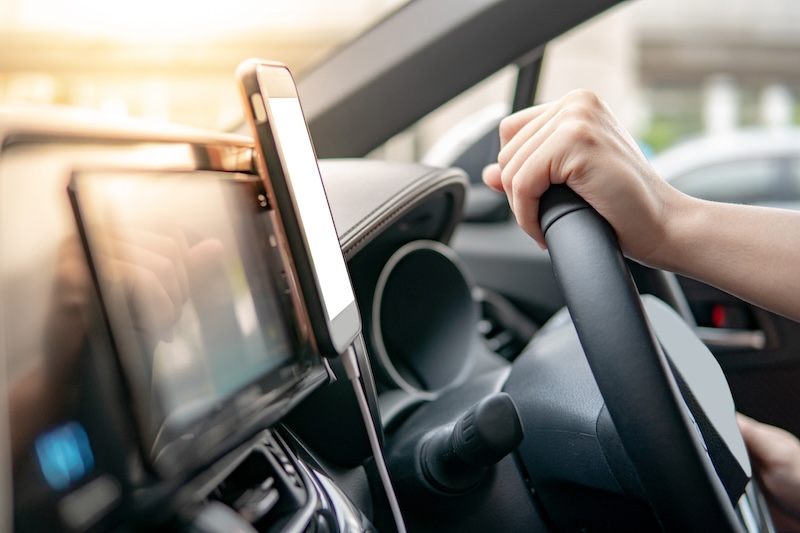Despite being hands-free, phones still cause distractions while driving

Hands-free tech can still be distracting when driving
Do you use hands-free technology while driving?
While just over half of drivers say they don’t use their phones at all while behind the wheel, the rest admit to using their device in a hands-free manner. And it might not be as safe as you believe.
What is hands-free?
Hands-free means just that. As long as you’re not physically holding the device in your hand, it counts as hands-free.
This includes Bluetooth headsets, voice command, a windshield mount and built in sat navs. The only condition is that your device can’t obstruct your view of the road and the traffic around you.
Hands-free also includes built-in systems in your car you can connect your device to.
What counts as holding a phone?
Currently, the law states you can’t hold and use a device at all while driving, including if you’re:
- stopped at traffic lights
- stuck in standstill traffic
- supervising a learner
- driving a car that turns the engine off when you stop moving
- holding a device that’s offline or in flight mode
This doesn’t just apply to phones, but to all devices that can send and receive data, including handheld sat navs.
There are only four exceptions:
- if you’re calling emergency services and it’s unsafe to stop
- you’re safely parked
- you’re making a contactless payment, and your vehicle is stationary, ie at a drive-thru
- if you’re using the device to park your vehicle remotely
How is hands-free distracting?
While going hands-free has lessened distractions, it still causes problems while driving.
In general, people struggle to carry out two cognitively complicated tasks at the same time, ie driving and talking or texting on the phone.
Even having a hands-free conversation will mean you stop looking out for hazards so diligently. This can cause more instances where you might have to slam on your brakes or swerve last minute, which increases the chance of an accident occurring.
In fact, even after hanging up the phone after a call, you remain distracted for approximately 27 seconds afterwards. Travelling at 65mph, you’ve covered almost half a mile while distracted.
Of course, the potential for accidents when holding a phone are much greater.
New tech can keep drivers safer
Advances in driving assist technology can help keep drivers safer on the road.
Tech like cruise control, blind spot detection, automatic emergency braking and driver attention monitoring are all instrumental in helping to keep drivers and pedestrians safe on the road.
However, that doesn’t mean it’s okay to use your phone or other devices when behind the wheel. Drivers should keep full attention on the road, regardless of any assistant technology your vehicle may have.
If you want to know more about driver assistance technology, check out our blog on automatic emergency braking.


